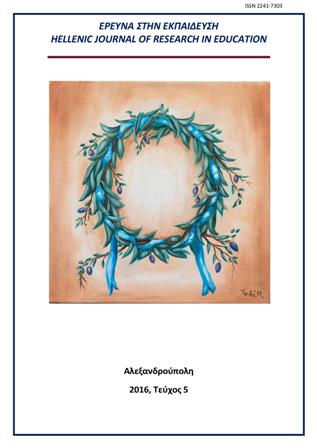Πρώιμες μορφές σχολικού εκφοβισμού σε παιδιά προσχολικής ηλικίας

Περίληψη
Κύριος σκοπός της παρούσας μελέτης είναι η διερεύνηση των διαδικασιών αναδυόμενης θυματοποίησης καθώς και την εμφάνιση πρώιμων μορφών σχολικού εκφοβισμού στο πλαίσιο των διαμορφούμενων κοινωνικών αλληλεπιδράσεων που αναπτύσσονται σε παιδιά προσχολικής ηλικίας. Σε σχέση με αυτό, επισκεφθήκαμε χώρους προσχολικής εκπαίδευσης όπου καταγράφηκε το πλαίσιο μέσα στο οποίο εκδηλώνονται τα περιστατικά θυματοποίησης. Στην παρούσα έρευνα συμμετείχαν συνολικά 8 σχολεία προσχολικής αγωγής και συγκεκριμένα 167 παιδιά προσχολικής ηλικίας (4 έως 6 ετών), εκ των οποίων 88 ήταν κορίτσια και 79 αγόρια. Για την συλλογή των δεδομένων χρησιμοποιήθηκε η μέθοδος της μη συμμετοχικής παρατήρησης. Σύμφωνα με τα αποτελέσματα μας, οι διαδικασίες αναδυόμενης εκφοβιστικής συμπεριφοράς σε παιδιά προσχολικής ηλικίας είναι ένα κοινωνικό φαινόμενο στο οποίο εμπλέκεται ολόκληρη η ομάδα ομηλίκων της τάξης, είτε ενεργά είτε ανενεργά. Οι πρώιμες αλληλεπιδράσεις εκφοβιστικής συμπεριφοράς και θυματοποίησης συσχετίζονται με παράγοντες του άμεσου κοινωνικού περιβάλλοντος όπως οι σχέσεις ομηλίκων και η ποιότητα του περιβάλλοντος των δομών προσχολικής αγωγής. Στη συζήτηση αναλύονται οι παιδαγωγικές επιπτώσεις της έρευνας σε σχέση με την ποιότητα των σχέσεων που αναπτύσσονται στις δομές προσχολική αγωγής.
Λεπτομέρειες άρθρου
- Πώς να δημιουργήσετε Αναφορές
-
Βλάχου Μ., Βotsoglou K., & Ανδρέου Ε. (2016). Πρώιμες μορφές σχολικού εκφοβισμού σε παιδιά προσχολικής ηλικίας. Έρευνα στην Εκπαίδευση, 5(1), 17–45. https://doi.org/10.12681/hjre.9096
- Τεύχος
- Τόμ. 5 Αρ. 1 (2016)
- Ενότητα
- Άρθρα

Αυτή η εργασία είναι αδειοδοτημένη υπό το CC Αναφορά Δημιουργού – Μη Εμπορική Χρήση – Παρόμοια Διανομή 4.0.
Τα πνευματικά δικαιώματα των άρθρων του περιοδικού ανήκουν στους συγγραφείς. Τα άρθρα διατίθενται με άδειες Creative Commons CC-BC-SA 4.0


